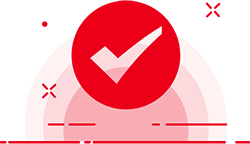 EN
EN

 EN
EN

Industry Insights
Sep. 28, 2024
Kings 3D has SLS P440 Pro (max forming size is 440*440*450mm) and FDM printers (max forming size is 1000*1000*1000mm) both of which can print with nylon materials. Mainly distinguish in terms of the printing process, mechanical properties, and applications.
Keywords: SLS Printing, FDM Printing, Nylon 3D Printing, SLS vs FDM, Nylon Material, 3D Printing Comparison, SLS Technology, FDM Technology, Industrial 3D Printing, Nylon SLS
1. Printing Process & Post-process
SLS uses a high-powered laser to selectively fuse nylon powder particles layer by layer. The laser sinters (melts) the powder in the desired areas, and the un-sintered powder acts as a natural support for the model, eliminating the need for additional support structures.
No additional support structures are required, as the unsintered powder naturally forms the support. After printing, powder cleaning (removal of excess powder) and post-processing are required.
FDM works by extruding melted nylon filament through a heated nozzle and depositing it layer by layer to build the object. Each layer solidifies upon cooling and bonds with the previous layer.
FDM typically requires support structures for overhangs or complex geometries, which must be removed manually or dissolved after printing.
2. Mechanical Properties
SLS nylon parts have better mechanical properties, including higher strength and toughness, due to better inter-layer bonding achieved during the sintering process.
FDM nylon parts generally have weaker mechanical properties, especially in the Z-direction, due to layer-by-layer adhesion, which is not as strong as the sintering process. This can result in anisotropic properties, with the weakest point along the layer lines.
3. Different Applications
SLS is widely used in industries like aerospace, automotive, medical, and consumer products.
FDM is suitable for quick prototyping, functional testing, and low-cost production of parts with simpler geometries or where surface finish is not critical.
Choosing between SLS and FDM for nylon printing depends on the specific requirements of the project, including budget, part complexity, mechanical performance, and desired surface finish.
Below are Kings 3D SLS printer set and FDM printer.


If you are interested in more, feel free to contact us here!
Author: Daisy/ Christine
Related Articles
Kings 3D’s Self-Developed PA12 Powder Passes EU Food Contact Compliance Tests
We’re proud to announce that Kings 3D’s self-developed nylon powder material – PA12 – has successfully passed selected tests for food contact suitability, compliant with the following key European regulations.
Nov. 11, 2025
Main Torch Tower of the 15th National Games: A Masterpiece by Kings 3D!
On the evening of November 9, 2025, the 15th National Games of China opened grandly at the Guangzhou Olympic Sports Center. As the torchbearer ascended with the “Bloom” torch in hand and ignited the 16.5-meter-high main torch tower, the ceremony reached its climax.
Nov. 10, 2025
Kings 3D, a leading provider of industrial 3D printing solutions, is excited to announce its participation in Formnext 2025, the world’s leading exhibition for additive manufacturing and industrial 3D printing.
Oct. 29, 2025
Related Products
Applications
Contact Us


Thank You!
Your message has been successfully sent. We’ll get back to you shortly.